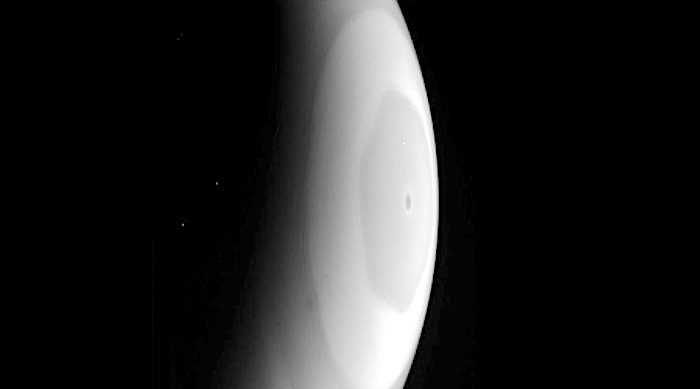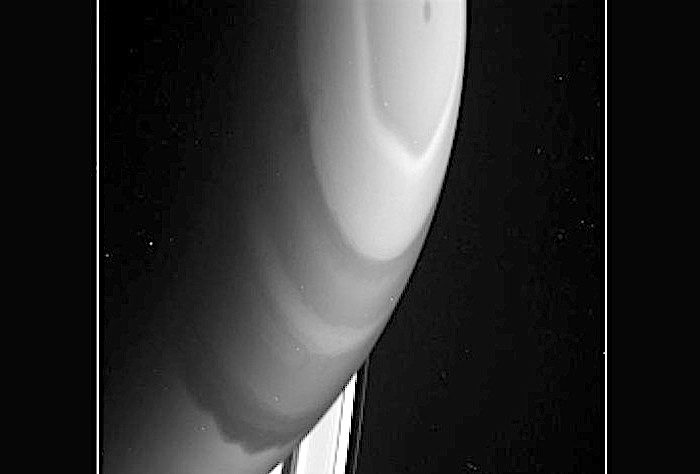In 1981, the US space agency's Voyager 2 spacecraft discovered a mass of clouds on the north pole of the gas giant that appeared to be permanently swirling.
Shaped like a hexagon, the weather anomaly has changed in color over the years from a bluish tint to a gold, possibly due to an increased reaction to light in the atmosphere.
NASA has now released new images of Saturn's peculiar storm taken during Cassini's orbit of the planet. The images were taken on Wednesday using the Cassini craft's methane and chlorine gas filter camera.
The snaps show with almost perfect clarity the hexagonal storm, which contains hurricanes that spin both clockwise and counterclockwise. It's thought that the gaseous tempest has been raging on the planet for hundreds of years.
"The hexagon is just a current of air, and weather features out there that share similarities to this are notoriously turbulent and unstable," Andrew Ingersool, of the Cassini Imaging Team, previously said of the phenomenon.After 20 years in space, the Cassini probe is expected to plunge into Saturn's atmosphere on September 15 this year. The destruction of the hardware will bring the curtain down on an incredible journey that has seen the spacecraft beam thousands of images of the gas giant back to Earth.
"A hurricane on Earth typically lasts a week, but this has been here for decades - and who knows, maybe centuries."





Reader Comments